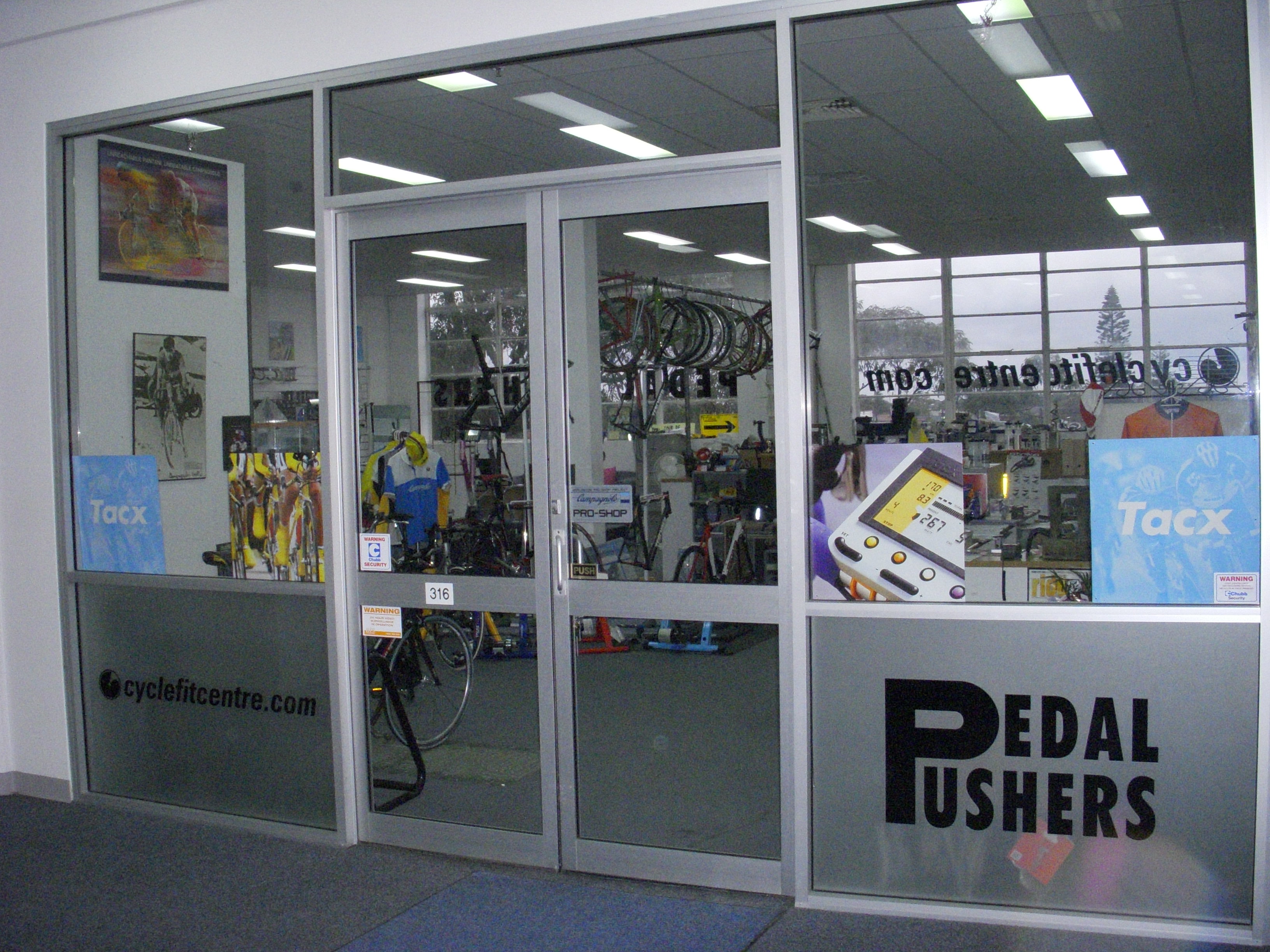By Colby Pearce
EVOLUTION OF A FIT
“J” has been a regular fit client of mine for a few seasons. He has ridden for multiple professional teams in the United States over the last few seasons and competes at a high level domestically, specializing in climbing and time trialing. He is 180cm / 66kg with a FTP of about 340w at 1650m altitude.
Over several years, I have fitted him on six different road frames, five different TT frames, using four different saddles. We have also worked on his CX bikes and MTB’s.
He is a very functional rider overall but does show some signs of L hip drop, which can get better or worse under certain circumstances. He is a rider who is capable of riding an extremely low bar on a TT bike, probably lower than is aerodynamically ideal (as the shoulders get too far below the plane of the hips, the back begins to “shovel” air). He bends very well at the hip, has a supple pedal stroke, and rides with a very stable pelvis under load (except for the L hip). He has long arms which typically means the resulting stem on a L or XL frame (depending on the manufacturer and model) is a 130mm or 140mm.
At one point several seasons ago, he felt a lack of power and began dropping his saddle, bit by bit, on his own. Over a period of about three months this process continued, and by the time I finally saw him, he was nearly 30mm too low in overall saddle height. My jaw nearly hit the floor. At times, when a rider misses the optimal window for a particular dimension, it is possible to get so far off track that the result becomes comically far from the intended target.
We have worked to get his position dialed and had him in a good place last winter, but this season has been challenging because of one factor we cannot control: his saddle sponsor. J has found the SMP Dynamic to be his first saddle choice after riding on saddles from numerous other manufacturers. This season a prominent Italian saddle manufacturer sponsored his team and this has made things challenging. The saddles provided by his sponsor were too narrow and flat to offer a stable platform for the base of his pelvis which resulted in chronic lower back pain. This led to some attempted saddle “surgeries” to try and remove the cover from one of his team issue saddles and re-attach it to a Dynamic in order to have logos which were congruent with the financial interests of the team.
This may seem unusual, but I can assure you, after working at the ProTour level last year as part of the Sports Science program for Garmin-Sharp, this type of thing happens all the time. Observant fans can easily spot covered labels and cosmetically altered equipment being used by top-level pros. In a sport which requires such an intimate match of athlete and mechanical device, it is not surprising when a rider has specific equipment requirements. But, the bottom line is that teams need money to fly riders to races, hire staff, and pay for buses, race entries, and countless other expenses. If a saddle sponsor comes to the team management with a check in hand, how many riders will actually ride well using that product is almost not even considered in most cases. Only the teams funded by a benevolent dictator can afford to purchase what they think is best (remember the complete train wreck of Rock Racing in the US a few years ago?), most programs are forced to live with whatever brand has the cash to promote their product.
That said, there is also a phenotype of athlete who can ride almost anything and barely notice when even gross mechanical errors are made in bicycle set up. Steve refers to these types of riders as “High Level Compensators.” These athletes are not found in fit labs with great frequency but probably 50 percent of the ProTour peloton is made up of athletes who fit this description. They are human equivalent of horses; you smack them on the ass, and they run.
The rest of the world, however, tends to feel small changes with much higher magnitude. J is one of these people. While highly successful, there have been moments in his career when his equipment or other issues have challenged his performance. We have, at times, installed a one, two and three mm shim under his L cleat to help him with his hip drop. This shim has been changed over time based on his feedback; there are times when he feels he is “reaching” to the L pedal and other times when he feels he is “compressed” on the L side. This is all within the context of instruction to maintain regular Foundation Training; stretching, strength and conditioning, massage and foam roller sessions. These are possible to varying degrees depending on how much racing and travel he is doing. Maintaining off the bike routines can be quite challenging in a hotel room in Canada (for example).
The videos here show footage of J using his preferred Dynamic saddle. Its clear to see his movement patterns, even given what we have found to be the best possible set up for him, are not quite perfect. We are all asymmetrical humans, trying to make power on a symmetrical device.
Here, we can see the slight rotation of the lumbar spine at BDC on the L leg; just under the CA license plate:
Here, we can see the tendency towards “left hip drop” where the left SI joint tends to fall towards the ground at BDC of the pedal stroke:



